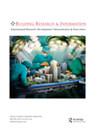Transitioning from green to circular procurement in developing countries: a conceptual framework for Ghana’s construction sector
IF 3.7
3区 工程技术
Q1 CONSTRUCTION & BUILDING TECHNOLOGY
引用次数: 0
Abstract
ABSTRACT Circular procurement (CP) systems are fast evolving and recently, regarded as a ‘golden-ring’ to be leveraged in promoting the circular economy. However, it appears that the construction sector of developing countries is yet to make any significant adaptions and improvements to its existing procurement practice. In this paper, we examine the state of procurement practice in such countries for opportunities to develop and implement CP. Using case analysis from the Ghanaian context, evidence on the status quo of existing green procurement system is sought to ascertain gaps and similarities between practice, policy and targets needed for CP implementation. Qualitative methods comprising the use of secondary data and interviews with stakeholders from three public tendered projects were adopted, and results analysed to develop a conceptual framework for CP. The findings of the study reveal that government policy, circular strategy, circular sourcing and platforms are essential components that need to be developed for CP implementation. Hence, the developed framework proposes an integration of these aspects through the four-lenses of people, process, policy and technology. The output of this research provides a collective roadmap for policymakers, practitioners and academicians towards the attainment of more circular consumption patterns in emerging construction markets.发展中国家从绿色采购向循环采购过渡:加纳建筑业的概念框架
循环采购(CP)系统正在快速发展,最近被视为促进循环经济的“金戒指”。然而,发展中国家的建筑部门似乎尚未对其现有的采购做法作出任何重大调整和改进。在本文中,我们审查了这些国家的采购实践状况,以寻找制定和实施CP的机会。通过加纳背景下的案例分析,寻求现有绿色采购系统现状的证据,以确定实施CP所需的实践、政策和目标之间的差距和相似性。采用了定性方法,包括使用二级数据和采访三个公共招标项目的利益相关者,并对结果进行了分析,以制定CP的概念框架。研究结果表明,政府政策、循环战略、循环采购和平台是CP实施所需开发的重要组成部分。因此,制定的框架提出通过人、过程、政策和技术四个视角来整合这些方面。这项研究的成果为政策制定者、从业者和学者提供了一个集体路线图,以在新兴建筑市场实现更循环的消费模式。
本文章由计算机程序翻译,如有差异,请以英文原文为准。
求助全文
约1分钟内获得全文
求助全文
来源期刊

Building Research and Information
工程技术-结构与建筑技术
CiteScore
8.60
自引率
7.70%
发文量
43
审稿时长
>12 weeks
期刊介绍:
BUILDING RESEARCH & INFORMATION (BRI) is a leading international refereed journal focussed on buildings and their supporting systems. Unique to BRI is a focus on a holistic, transdisciplinary approach to buildings and the complexity of issues involving the built environment with other systems over the course of their life: planning, briefing, design, construction, occupation and use, property exchange and evaluation, maintenance, alteration and end of life. Published articles provide conceptual and evidence-based approaches which reflect the complexity and linkages between cultural, environmental, economic, social, organisational, quality of life, health, well-being, design and engineering of the built environment.
 求助内容:
求助内容: 应助结果提醒方式:
应助结果提醒方式:


